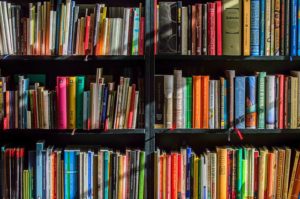What A Literary Diversity Audit Should Look Like
 I recently met with the new children’s librarian at my local library, and she said one of the priorities in her position is to do a much-needed diversity audit of all the children’s books stocked in the building. For those of you who don’t know, a diversity audit is a process of determining how inclusive a book collection and try to fix gaps in diverse representations.
I recently met with the new children’s librarian at my local library, and she said one of the priorities in her position is to do a much-needed diversity audit of all the children’s books stocked in the building. For those of you who don’t know, a diversity audit is a process of determining how inclusive a book collection and try to fix gaps in diverse representations.
This made me think about doing an audit on my own reading habits. I believe that everyone should read all types of books with many kinds of topics and characters to get a wide variety of perspectives.
Stacy Whitman of the famed multicultural publisher, Lee and Low Books, has this great list of ways to make reading more inclusive:
- Does your book list or collection include books with characters of color? LGBTQ? Differently-abled?
- Does it include books with a main character of color? LGBTQ? Differently-abled?
- Does it include books written or illustrated by a person of color? Of different nationalities, religions or sexual preferences?
- Are there any books with a person of color on the cover? Do the characters in the book covers accurately reflect the characters in the book?
- Think about your student population. Does your list provide a mix of “mirror” books and “window” books for your students—books in which they can see themselves reflected and books in which they can learn about others?
- Think about the subject matter of your diverse books. Do all your books featuring black characters focus on slavery? Do all your books about Latino characters focus on immigration? Are all your LGBTQ books coming out stories?
- Do you have any books featuring diverse characters that are not primarily about race or prejudice?
- Consider your classic books, both fiction and nonfiction. Do any contain hurtful racial or ethnic stereotypes, or images (e.g. Little House on the Prairie or The Indian in the Cupboard? If so, how will you address those stereotypes with students? Have you included another book that provides a more accurate depiction of the same culture?
I think this is a great list that all librarians and educators should seriously consider when selecting future books! I also found this video that is helpful.